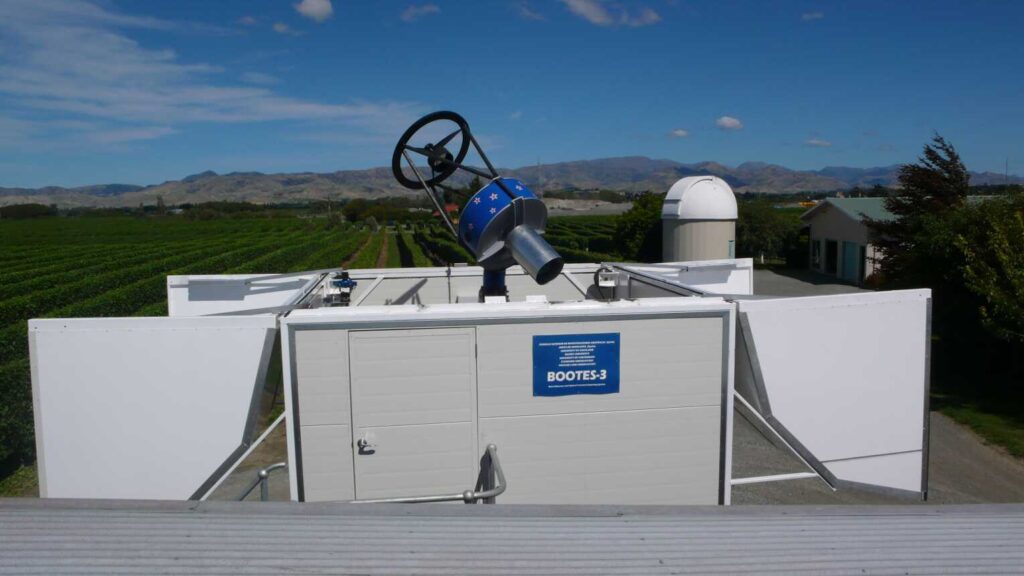BOOTES-3 is the third robotic observatory of the BOOTES Global Network of robotic telescopes BOOTES. It was shipped to New Zealand in autumn 2008. The BOOTES-3 robotic astronomical station was the first installation of the BOOTES Network outside Spain. It was officially opened on 27 Feb 2009 by Marcos Gómez, Spanish Ambassor in New Zealand. It was initially located at Vintage Lane, Blenheim (New Zealand), one of the best places for the observation of the night sky in the southern country. Since Oct 2014, it was reallocated in Lauder at one of the stations of the National Institute of Water and Atmospheric Research (NIWA). Its main scientific objective is the observation and monitoring of the optical counterparts of gamma ray bursts as quickly as possible once they have been detected from space-borne or ground-based observatories. BOOTES-3 is hosting a 0.6-m Ritchey-Chrétien fast slewing telescope, and it is dubbed YA (Yock-Allen) Telescope, in honour of Prof. Phil A. Yock and Eng. Bill H. Allen in recognition for their encouraging support.

It uses a dedicated 0.60 m f/8 Ritchey-Chretien telescope located at Lauder, near Alexandra, New Zealand (Latitude 45° 03′ 13″ S, Longitude 159° 40′ 24″ E, Elevation 369 m). The telescope has an ASTELCO NTM-500 mount with a maximum slewing speed of 20 degrees per second. The optical tube is made of carbon fiber to minimize the moment of inertia to reach it maximum slewing speed and to reduce the focus changes for thermal expansion. It operates in an open air dome.
Nowadays, the BOOTES-3 astronomical station instrumental setup is the following one:
| BOOTES-3 (YA) | |
| Mount | Astelco NTM-500 |
| CCD | Andor iXon EMCCD |
| Focal Length | 4800 mm |
| F | f/8 |
| Field of view | 10.3 arcmin |
| Filters | Johnson B Sloan g’, r’, i’ UKIRT Z and Y |
| – | – |
| All-sky CCD camera | |
| CASANDRA-1 | |
| Field of view | 180 deg |
Besides NIWA and University of Auckland, we appreciate the support of University of Auckland, as well as the contributions by Ian Bond (Massey Univ.) and Grant Christie (Stardome Observatory), both in NZ. Research in the field of gravitational microlensing, in support of MOA observations led by NZ researchers, is also being carried out.